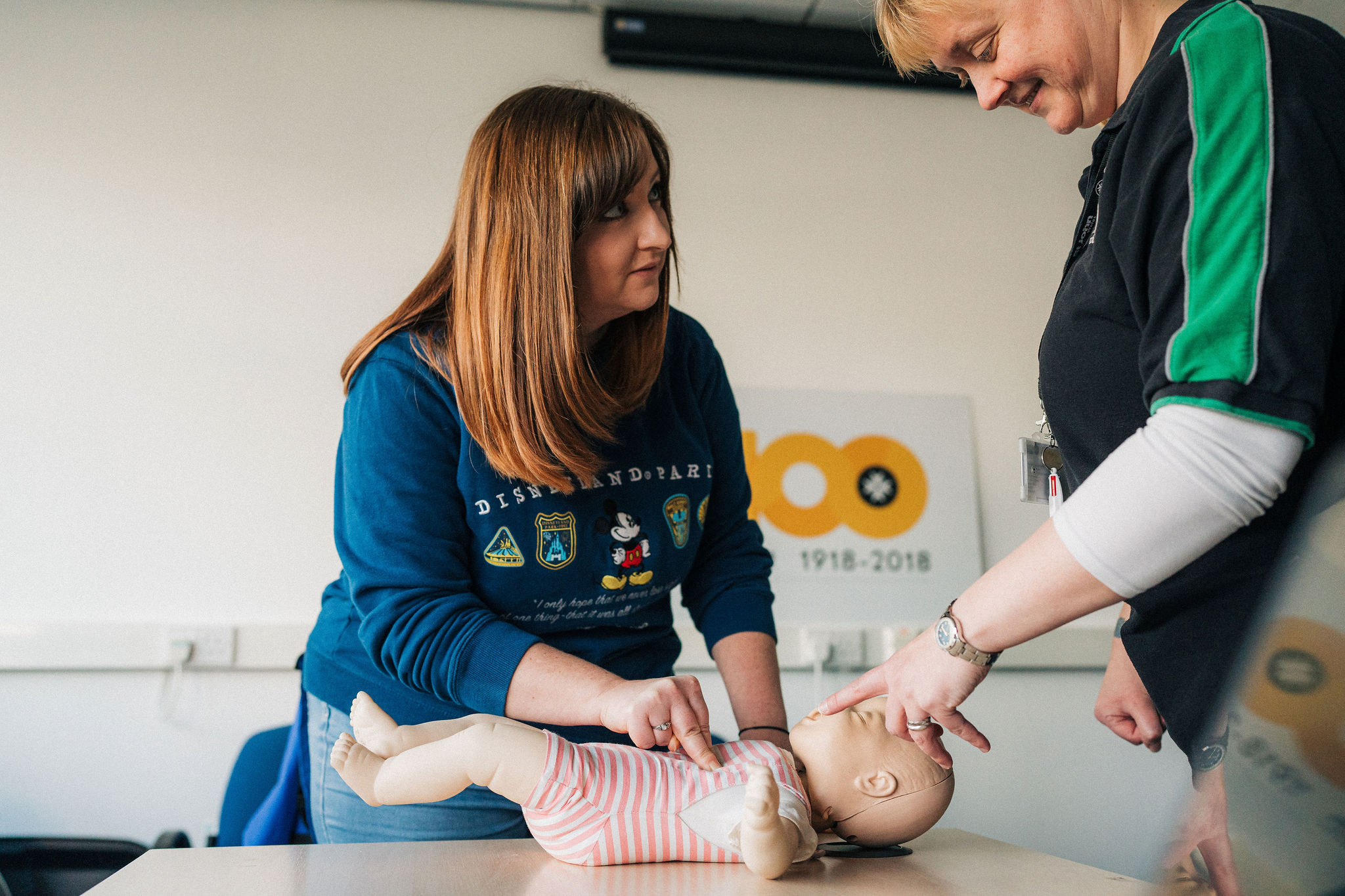Baby CPR & Infant CPR

For the purposes of first aid and resuscitation an infant or baby is described as a person who is aged from birth through to 1 year old.
We also have advice on how to perform CPR (cardiopulmonary resuscitation) on an adult (18+) or child (1-18 years old).
If you find an infant/baby collapsed or unresponsive, you should:
- Assess any dangers to yourself and the casualty. Move items if necessary to make the area safe.
- If safe to approach the casualty, assess the casualty’s response levels by gently tapping their shoulders and balls of their feet and shouting the baby’s name if known.
- If there is no response e.g. the casualty does not move, or open their eyes - shout for help.
- To open the airway, place one hand on the casualty’s forehead and tilt the head back gently (a slight sniffing the morning air position)
- Place your index finger of your other hand onto the casualty’s chin and lift. This will lift the casualty’s tongue from the back of their airway.
- With the head tilt and chin lift maintained, assess the casualty for breathing. Take no more than 10 seconds to assess breathing.
- Place your ear over the casualty’s mouth and nose and listen for breathing and feeling for breath on your cheek. At the same time look at the casualty’s chest and stomach to see if it is rising and falling.
If the casualty is not breathing normally or you are unsure start CPR:
- If there is a bystander ask them to call 999/112. If you are alone and have a mobile phone, call 999/112 and put your phone on loud speaker so that you can talk to the operator while performing chest compressions.
- If you are alone and you do not have access to a mobile phone, start CPR (as described below) for one minute. If the casualty does not show signs of life after one minute carry the infant/baby with you to find a phone and call the emergency services.
- A non-breathing infant/baby will need 5 initial rescue breaths (if you are willing and able) followed by 30 chest compressions, followed by 2 rescue breaths.
To give rescue breaths:
- Open the airway as described above, seal your mouth over the casualty’s mouth and nose if possible and blow steadily for no more than 1 second or until you see the chest rise. Give five initial rescue breaths
- If you are unable to seal your mouth over the infant’s mouth and nose, close the infant’s mouth and seal your mouth over the infant’s nose.
To perform chest compressions:
- Ensure the infant/baby is on a firm surface (ideally the floor).
- Place your index and middle finger in the centre of the infant/baby's chest.
- Push to achieve a depth of 4cms or a third of the infant’s/child’s chest depth.
- Give 30 chest compressions at a rate of 100-120 beats per minute. The beat of the song 'Staying Alive' can help you keep between this range.
- Keep your fingers straight and lean over the casualty. Press down to a depth of about 4cms before releasing the pressure, allowing the chest to fully recoil.
Following 30 chest compressions give two rescue breaths if you are willing and able. If you are unwilling or unable to give rescue breaths, perform chest compression only CPR as this is better than nothing. Push down hard and then release twice per second, and don’t stop. Ideally rescue breaths with chest compressions is most effective.
Continue giving 30 chest compressions followed by 2 rescue breaths and continue this until:
- Further qualified assistance arrives and takes over
- The casualty starts to show signs of life (breathing, talking)
- You become tired and need to swap with another bystander
- A defibrillator is ready to be used.
If you found this interesting and would like further information on how to perform lifesaving first aid on a young infant, then you may be interested in our Paediatric First Aid and Emergency Paediatric First Aid courses. These are nationally-recognised childcare qualifications that you need if you are looking after infants or babies.
